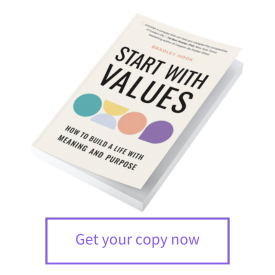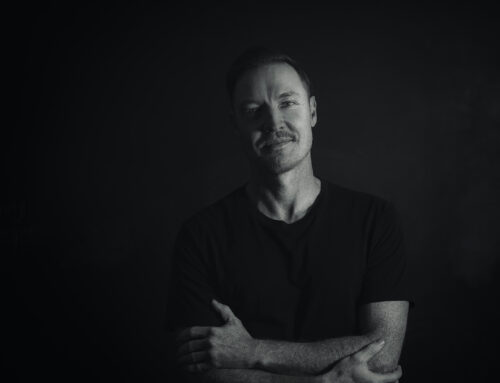Delivering hundreds of presentations across New Zealand has equipped me with invaluable insights into the art of speaking. Over the years, I’ve presented to organisations like Fletcher Building, MSD, Tourism New Zealand, PwC, The Icehouse, and at several conferences and major events.
Below are nine lessons that have profoundly influenced my approach, tailored to inspire event organizers, HR managers, and fellow speakers aiming to captivate and engage their audiences.
1. Understand Your Audience
Knowing your audience is paramount. Their cultural background, professional environment, and even the time of day affect how your message is received. Tailor your session to fit their context—whether it’s a formal setting within a New Zealand government department or a more relaxed tech company atmosphere. The right balance of interaction and content is crucial, especially for challenging times like the post-lunch slot. Ask lots of questions and get a comprehensive brief from your client. Find out who will be speaking before and after you. It is always appreciated if you can reference the previous speaker’s message in your presentation.
2. Be Clear on the Deliverables
Effective communication with your client is key to defining the session’s goals. Understand whether the aim is to inspire or to initiate actionable changes. This clarity helps in crafting a speech that meets expectations, avoiding the pitfalls of promising transformation without the proper tools or a series of sessions to sustain it. Remember, a speech can inspire, but a series of workshops can transform.
3. Prepare Your Room and AV Requirements in Advance
The choice of venue can make or break the effectiveness of your presentation. Ensure there’s adequate space and the necessary AV setup—like HDMI cables and screens. Assume nothing! I once arrived to give a presentation to a government department in Wellington and there was no projector. After some fuss, they wheeled in a projector from the eighties, appropriately labeled “Gandalf.” My MacBook Pro with USB-C ports was never going to communicate with this machine, so I ended up drawing my entire presentation on whiteboards! Some of my favorite venues in New Zealand include Skyline Queenstown, Waitakere Resort and Spa, and the Maritime Room on Princes Wharf in Auckland, each offering the right blend of amenities and ambiance. Natural light and views can really elevate your session!
4. Use Humour Wisely
Humour is a subtle yet powerful tool. In New Zealand, audiences might seem more reserved compared to their Australian counterparts, who are typically up for more banter and offbeat jokes. Kiwi audiences value sincerity and will warm up significantly once trust is established. Use humour to create a connection but base it on authenticity, humility, and warmth. Self-deprecation is much appreciated as a starting point and Kiwis have some great “dad jokes,” and wit, so encourage participation. Avoid politics or religion and be inclusive.
5. Embrace Local Themes
Integrating local culture into your presentations shows respect and relevance. For instance, I have aligned my wellness models with concepts like Te Whare Tapa Wha (Haoura) and found it resonates well. Start your presentation with a “Kia Ora” to set a welcoming tone and demonstrate cultural awareness.
6. Use Storytelling
Engage your audience with compelling stories. Whether it’s personal anecdotes or local narratives, such as my participation in a surf therapy program in the Bay of Plenty, stories can provide relief and reinforce learning. They help frame your message in a way that is both enjoyable and educational. I tell many stories about my travels and Kiwis, as enthusiastic world travellers, love the wisdom gleaned from interviewing so many interesting and unique people on my journeys.
7. Arrive the Day Before
Travel within New Zealand can be unpredictable. To avoid the stress of last-minute travel issues, like the common flight delays in Queenstown and Wellington, plan to arrive at least a day early. This not only ensures reliability but also helps you approach your session refreshed and prepared. There’s nothing worse than planes and taxis, a traffic jam, then rushing into a seminar room with the audience already waiting, hassling with tech setup, and then starting without a moment to catch your breath. Which leads me to…
8. Look After Yourself
Self-care is often overlooked in the speaking profession. Prioritize your well-being to maintain your performance at its peak. Simple practices like mindful breathing, focusing on your purpose, or even a moment of quiet before taking the stage can make a significant difference. If you’re feeling stressed during your session, give the audience something to do. Ask them to spend five minutes discussing a specific topic with the person sitting next to them. The magic of a presentation often happens in these moments — and you’re giving yourself a breather.
9. Customise Your Presentation
Tailor your presentation to reflect the specific interests and recent achievements of your audience. Show that you have taken the time to understand their context by referencing local events, company milestones, or popular cultural elements like rugby, which is deeply woven into the New Zealand social fabric. However, double-check any references you’re not sure about and maybe don’t talk about the World Cup (especially if you’re originally from South Africa).
Building Beyond the Stage
To enhance your impact further:
- Build an Online Platform: Extend your engagement through blogs, LinkedIn posts, and more, allowing your audience to interact with your content long after the event. Show a QR code on your last slide, giving people places to go to connect with you.
- Give Free Events: These sessions can dramatically increase your visibility and help refine your speaking skills. Even if you’re an experienced speaker, it is worth speaking for free at a major conference to elevate your profile.
- Create a Showreel: Capture your best moments on stage to showcase your speaking dynamics and help secure future engagements. Ask if you can bring a videographer along, or position a camera on a tripod at the back of the room. You’ll learn a lot about yourself from the footage.
- Write a Book: Position yourself as an authority in your field by distilling your expertise into a book. This not only serves as an excellent tool for sharing your insights but also acts as a tangible takeaway for your audience. You can also turn your book into an online course and offer it to your clients as a deep dive into your topic.
Each of these lessons is a testament to the unique challenges and rewards of speaking in New Zealand, emphasizing the need for authenticity, preparation, and adaptability. As you apply these insights, you’ll find that your ability to connect with and impact your audience will continually grow.
✨ Start With Values
Receive $400 of bonus resources with any order of my new book,Start With Values (Penguin Random House).
Written by : Brad Hook
Brad Hook is a writer, podcaster, speaker and entrepreneur. He helps individuals and teams achieve sustainable high performance through inspiring workshops and a powerful suite of digital tools. Discover his new book, Start With Values (Penguin Random House), — available now!
Stay connected with Brad
BE NOTIFIED ABOUT EVENTS and receive the latest tools and tips first
We will never share your email with others.



